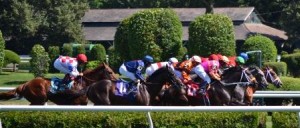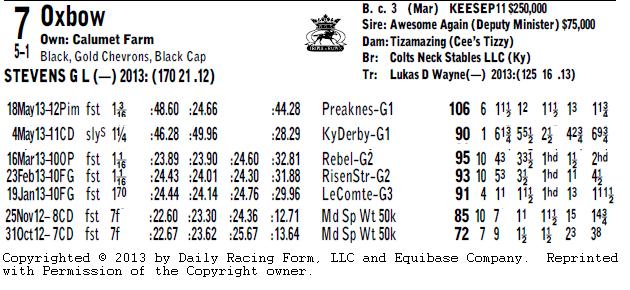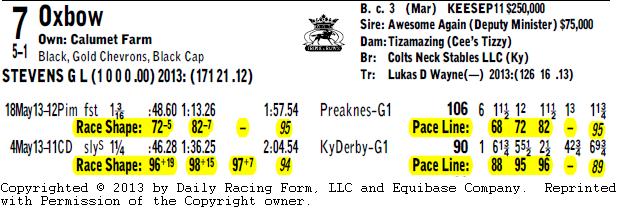Learning About Pace and Moss Pace Figures
If you spend much time at the race track, it’s only a matter of time before you hear a horseplayer say, “Pace Makes the Race.” It’s one of those timeless maxims that has forever been a part of racing and will forever be a part of racing. Entering a race, trainers and jockeys are well aware of the running style for their horse and generally for the other horses involved in the race. For similar reasons, it’s a good idea as a horseplayer to have the same awareness when handicapping a race.
When we say “running style,” we’re referring to how a horse generally runs in a race. Are they an “early speed” type that breaks quickly from the gate and races at the front of the pack? Are they more of a “closing” type, who breaks slow, trails the field throughout most of the race, and launches one big run at the end? Or, are they a “stalking” type, who settles in behind the frontrunners, staying close to the pace, and ahead of the late closing runners? A look at a horses running lines can give a good indication of which style they generally prefer. Click here for a review of an earlier article on Running Lines.
However, running lines aren’t always enough to tell the whole story. For example, how come an “early speed” horse sometimes carries that speed from start to finish, but other times coughs up the lead in the stretch? The most common answer to that question is PACE. Remember, Pace makes the race. For a good example, let’s look at Oxbow, winner of the 2013 Preakness Stakes.
You can see from his running lines that he is always close to the pace, if not right on the lead. Sometimes that speed resulted in a win or close 2nd, but other times he tired late in the race. Why? Let’s focus on the two most recent races, and introduce something called Pace Figures to help explain the difference between his Kentucky Derby and Preakness efforts.
Pace Figures are similar to Beyer Figures, in that they represent a relative measure of the pace of a race. The larger the number, the faster the pace. However, unlike Beyer Figs, there are Pace Figures for multiple points in the race. The DRF Formulator program places the Pace Figures for the horse directly beneath the running lines for the race; with the heading “Pace Line:”. To the left of that is another line of Figures with the heading “Race Shape:”. These Figures represent the Pace Figure for the horse that was on the lead at each point in the race.
Included in the “Race Shape” figures is a superscript number with a +/- value. This is a comparison of the Pace of this race to the Par for this type of race. + indicates a race run faster than the Par, while a – symbol means it was run slower than the par. The number represents how much faster or slower than the Par.
So, looking at Oxbow, we can see that the Kentucky Derby race was run extremely fast compared to the par (+19, +15, +7) … AND, that Oxbow was very close to this hot pace. Notice his middle Pace Figure of 96, and he was 2nd trailing by only 1/2 length at that point. After that, he tired and finished 6th.
However, the Preakness Stakes paints an entirely different picture. Oxbow broke quickly, got to the lead, and then managed to stay on the lead running a very reasonable pace compared to par (-5, -7). Notice when comparing his Pace Line for the Preakness to the Kentucky Derby, there is a difference of 14 to 23 points in the first three calls. This slow pace enabled him to finish the race strong, and not let anyone catch him.
Whenever I think of Pace, I recall the story of the Hare and the Tortoise, and how the Hare tired himself out to the point that he fell asleep and let the Tortoise pass him to win the race. In the simplest terms, that’s how things work in a horse race. A horse that works hard early and uses up his energy is vulnerable to horses passing him. But, a horse that is allowed to relax and cruise a long at a moderate speed is very hard to chase down in the stretch. There is a limit to how fast the other horses can run.
We’ll be getting into Pace Figures in greater detail later. But, if you’re interested there is a good FAQ section on them at the Daily Racing Form’s website. Click here to see it.
A footnote on Pace Figures: There presently are no Moss Pace Figures available for Turf races in the Daily Racing Form. Other programs, like TimeformUS do provide Pace Figures for Turf races.
To read an article on how Moss Pace Figures were utilized in an actual handicapping situation at Saratoga in 2013, click here to view an article titled “Pace Makes The Race.”




5 comments on “Learning About Pace and Moss Pace Figures”